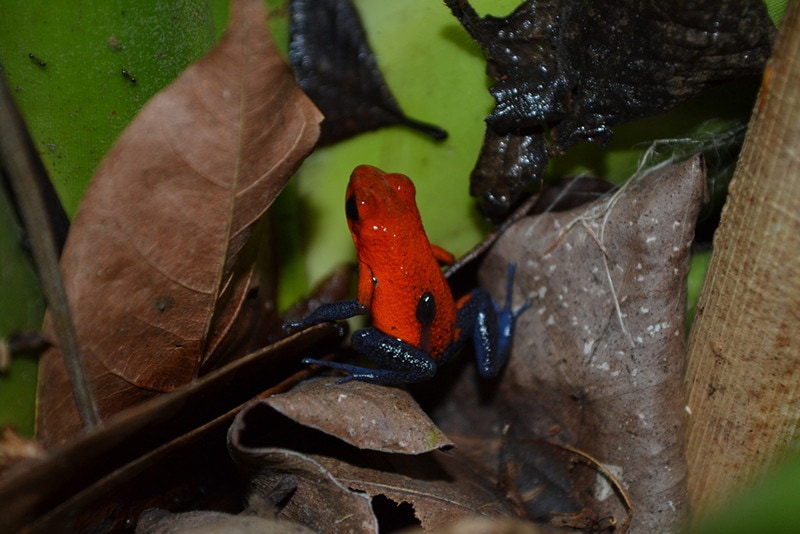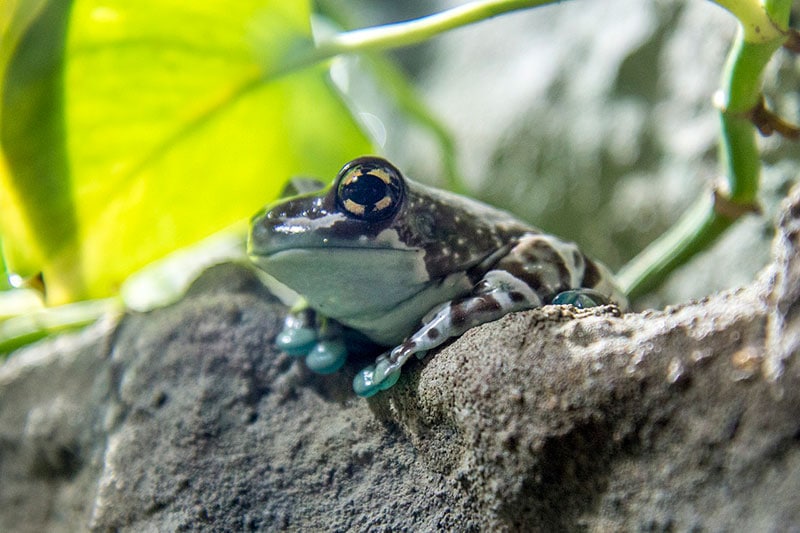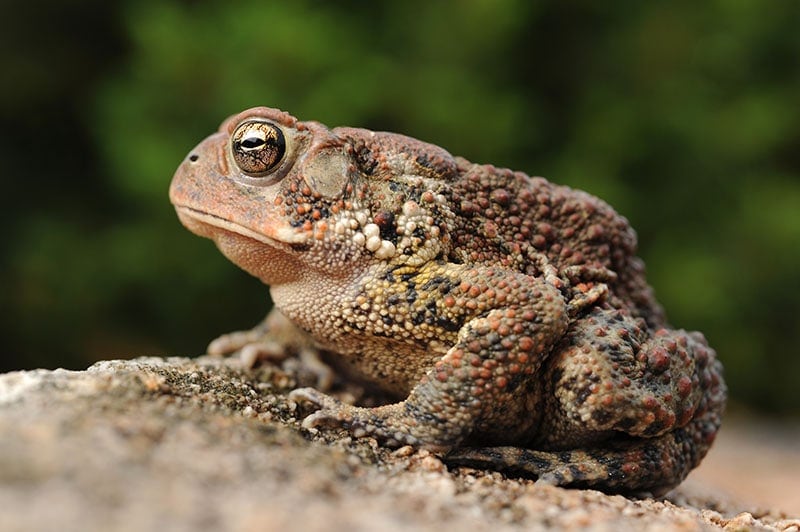6 Types of Poison Dart Frogs: Vet-Verified Info With Pictures
Updated on

Poison dart frogs are some of the deadliest frogs, famous for their brightly colored skin and potent poison. These poisonous amphibians come in colors from blue, red, yellow, orange, black, and more, and you may have heard about how some Amazon tribes used their poison on darts. If you’ve ever wanted to learn more about these brilliantly colored critters, you’ve come to the right place. Let’s wade in below with some info about different types of poison dart frogs and what makes them unique.
The 6 Types of Poison Dart Frogs
1. Blue Poison Dart Frog

| Native to: | Suriname |
| Conservation status: | Least Concern |
| Scientific name: | Dendrobates tinctorius azureus |
Sometimes called the blue arrow dart frog, this azure amphibian is only native to the Sipaliwini Savannah in Suriname, which is the smallest country in South America. They live on tree trunks, but also in the dead layer of leaves on the rainforest floor or leaf litter.
Unlike some more aggressive poison dart frogs, the blue frog isn’t aggressive toward other animals and only uses their poison in self-defense or to deter predators. Their habitat has decreased a bit because of human encroachment, but not as much as other species of dart frogs.
2. Golden Poison Frog

| Native to: | Colombia |
| Conservation status: | Endangered |
| Scientific name: | Phyllobates terribilis |
Commonly called the golden poison dart frog, this frog ranges from bright yellow to orange colors but with the same potent poisonous skin. Golden poison frogs are only native to a region in western Colombia, where indigenous peoples today still rub their darts on the frogs to borrow poison for hunting. Most notably, a milligram of the golden poison frog’s toxin has enough potency to kill up to 10 to 20 humans! Sadly, this species has become endangered because of rampant deforestation in Colombia.
3. Strawberry Poison Dart Frog

| Native to: | Central America, South America, Hawaii (invasive) |
| Conservation status: | Least Concern |
| Scientific name: | Oophaga pumilio |
Also called the blue jeans dart frog, the strawberry poison-dart frog is famous for their numerous color variations, including the beautiful blue jeans coloration on the legs. Among the smaller poison dart frogs, this species is native to parts of Central and South America and imported to Hawaii in the early 20th century. They were supposed to be for pest control but quickly ran amuck and became highly invasive. They’re one of the few dart frogs at little risk for endangerment.
4. Green and Black Poison Dart Frog

| Native to: | Central America, South America, Hawaii |
| Conservation status: | Least Concern |
| Scientific name: | Dendrobates auratus |
The green and black poison dart frog was also introduced to Hawaii as a pest control measure gone wrong. Despite the name, this species of dart frog has a wide color palette ranging from muted black and light blue to deep black and bright green. Most interestingly, the so-called mint poison dart frog is also endemic to Costa Rica’s rainforest.
5. Mimic Poison Frog

| Native to: | Peru, Brazil |
| Conservation status: | Least Concern |
| Scientific name: | Ranitomeya imitator |
Originally thought to be just one species, the mimic poison frog was found in 2017 to actually be several distinct species with their own colors and behavioral patterns. Whether these subspecies are actually distinct enough to merit being separate species is up in the air. A fun fact about this dart frog is that they’re much less toxic than other species, and their body can’t hold very much venom either.
6. Dyeing Poison Dart Frog

| Native to: | Venezuela and the Guinea Shield |
| Conservation status: | Least Concern |
| Scientific name: | Dendrobates tinctorius |
Native to tropical parts all over French Guinea, Venezuela, and more, the dyeing poison dart frog is among the largest dart frogs at just 2 inches long. The most common colors are white, black, yellow, and blue, with countless patterns to be seen in different frogs. Their venom is moderately poisonous to humans, with the signs including numbness, cramping, and pain. However, varying reports of their poison’s toxicity make it seem as though some individual frogs are more poisonous than others.
 Conclusion
Conclusion
With their diminutive size, gorgeous colors, and concentrated poison, the poison dart frogs are a favorite among indigenous peoples and exotic animal collectors alike. Species vary drastically, from endangered and super venomous to plentiful and relatively mild.
Featured Image Credit: garten-gg, Pixabay












